Thermal Results
For this review we built up a revised test bench for the most accurate testing we could do on X99. For details see the following posts – CPU Block Testing Methodology & CPU Block Testing Part 2. The methodology is the same however after the Rampage V died we moved to an EVGA board and therefore had to retest all the other blocks with the new setup. Having already tested these blocks (and a beta of the 390) on the same exact 5820K (albeit a different motherboard) then we already knew the best orientation of the block. For X99 this nearly always means the waterblock channels are parallel to the ram slots. However we prefer to tell people how to mount relative to the exterior of the block which means that the “goofy” orientation is preferred for X99. On the more mainstream 115X based CPU’s it’s almost always 90 degrees different.
Just as a reminder – this is the worse “normal” orientation:
This is the better performing “goofy” orientation:
We did 6 mounts of each block – and although we had a large variety of blocks to choose from we decided to exclude some of the previous poor performers and only focus on those blocks performing at the top of our previous results. As all CPU blocks these days really use the same architecture and have usually gone through several design iterations then the results are expected to be close. 6 mounts is not really enough to tell many of the block designs apart. Much of the result from one data point depends on luck as to how good a mount you give the block each time. With enough mounts you can get more accuracy, but it’s important for the reader to remember that the mount to mount variation is far larger than the difference between some blocks. For this reason we’ve presented the data in a number of ways.
First off let’s look at the average result sorted alphabetically:
Here we can see that the CPU-390 is a modest chunk (1C) better than the CPU-380. Our sample of the CPU-380 was always quite the fighter so it’s not a surprise to see it still doing well even if it’s at the bottom of this elite group of blocks. Let’s reorder the results though in terms of performance:
The CPU-390i sits at the top of the table although 0.03C is well inside our margin of error. In second place (just) the Heatkiller IV Pro is really our reference point to pay attention to as it had previously demonstrated it’s chart topping performance on both the 4930K and the previous 5820K testing.
Although the CPU-390CI may look like it’s dropped the ball by finishing in third place, it’s still only 0.1C behind the acrylic version of the 390. We had hoped to see the full metal version distinguish itself with slightly higher performance but the data really is just too close to call. While the metal top may dissipate some heat it has a weak thermal connection to the CPU and limited surface area. It also will change the bow of the block slightly. Realistically the data says that as far as we can tell all three blocks are identical performers. This is made more clear when we look at the confidence intervals:
Confidence intervals are based on the standard deviation of the data – blocks with low standard deviations have a tighter spread on the plot. I used to use 95% confidence intervals, but have now switched to 99% as it seems more representative of the mount data. It gives a real indication of how much variation there is in the data and why so many of the blocks are essentially the same performance wise.
This plot is also useful because it’s noticeable that two blocks (XSPC and EK) where the thumb nuts only had a limited amount of thread and are designed to be tightened until they run out of thread gave far tighter results. This either means that they are giving up performance by not being tightened down enough and/or that the smaller amount of thread is more likely to give a more repeatable mount.







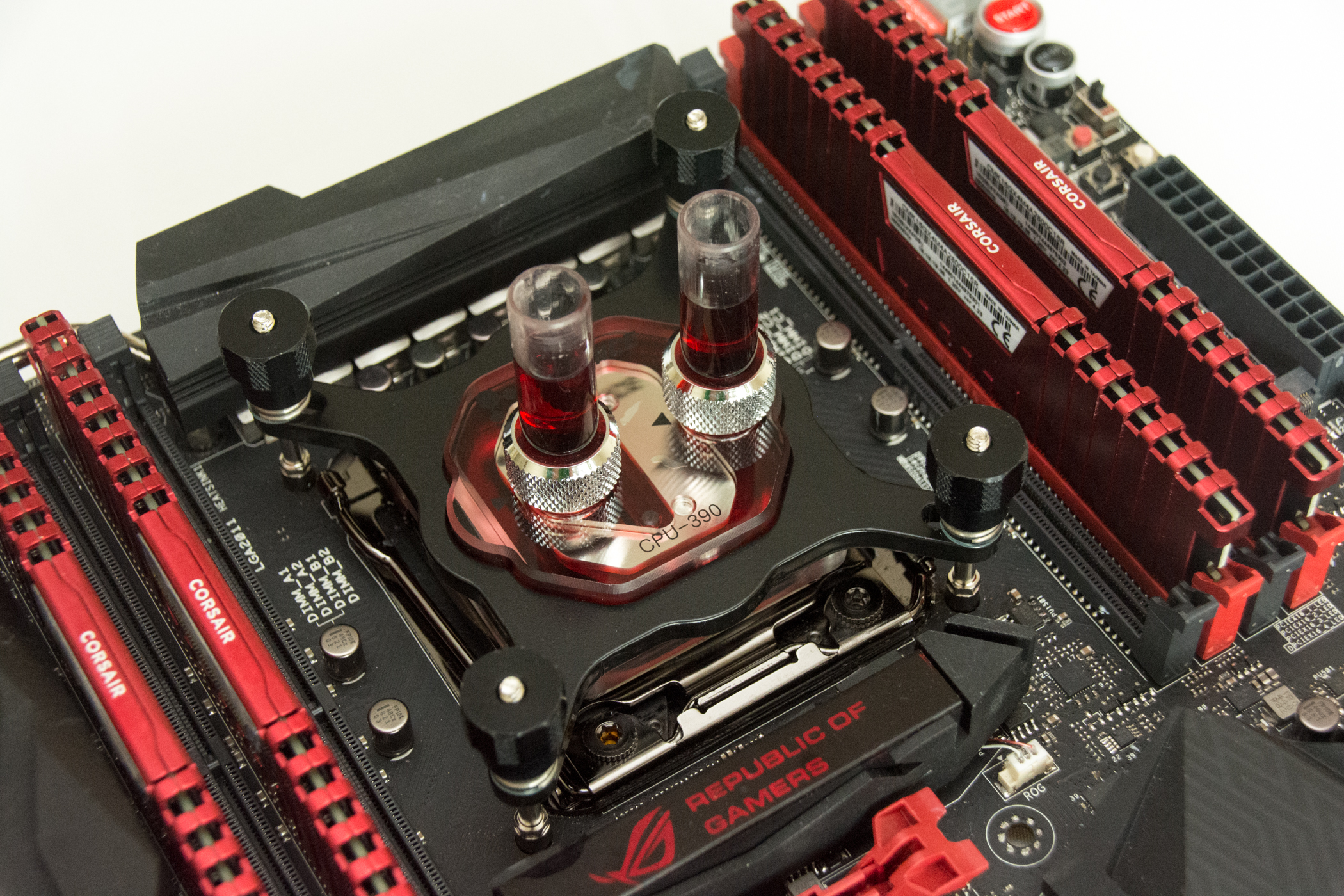
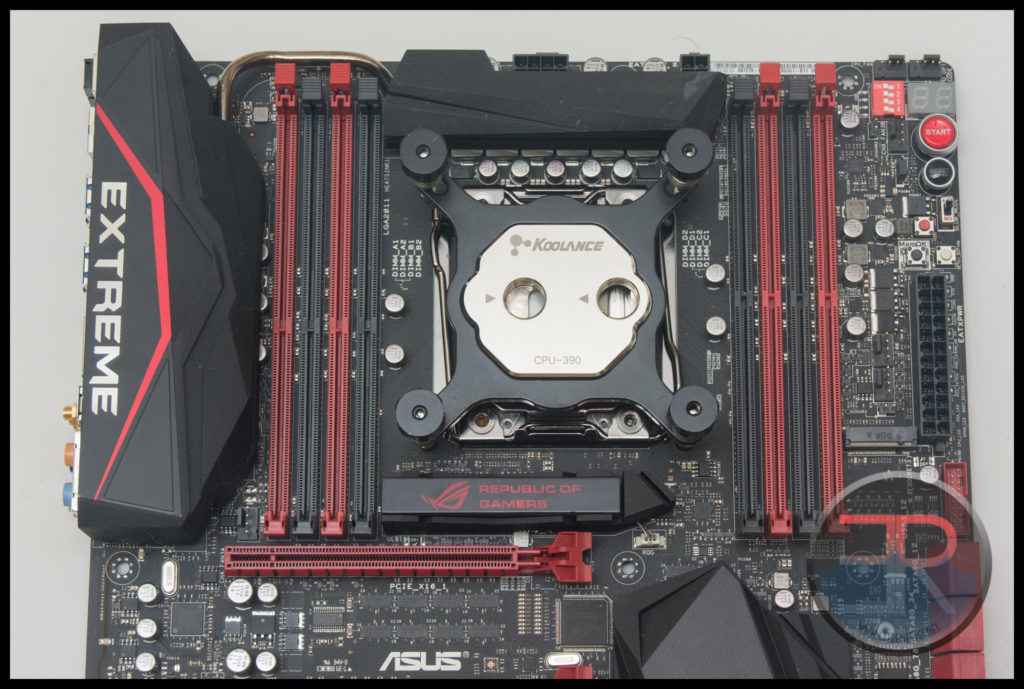
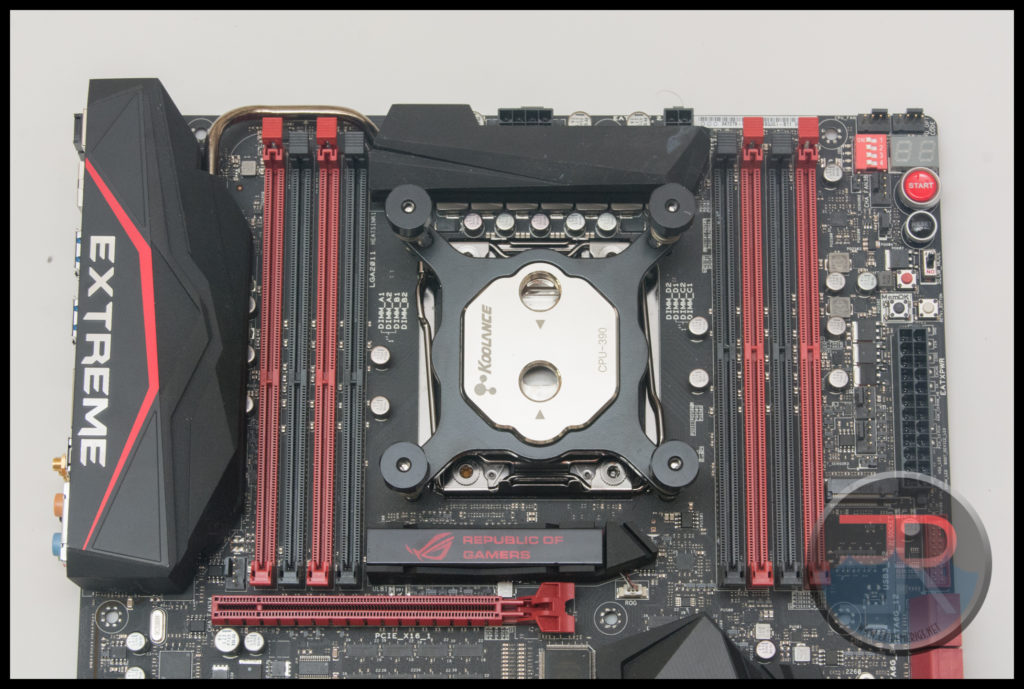
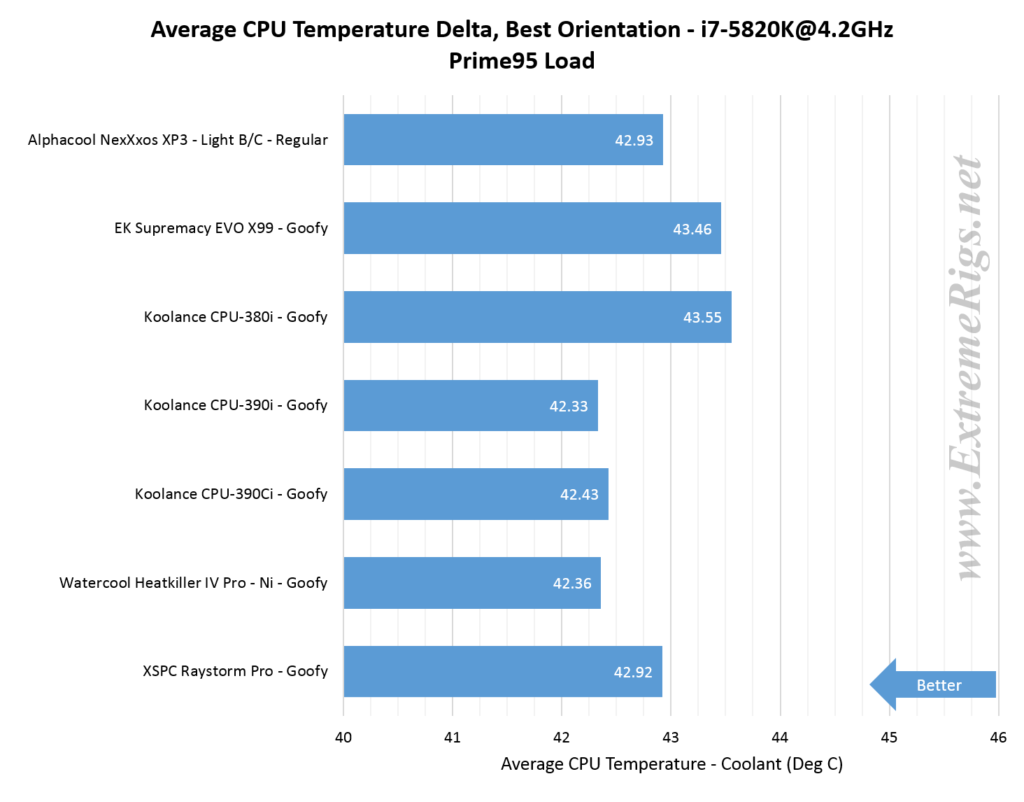
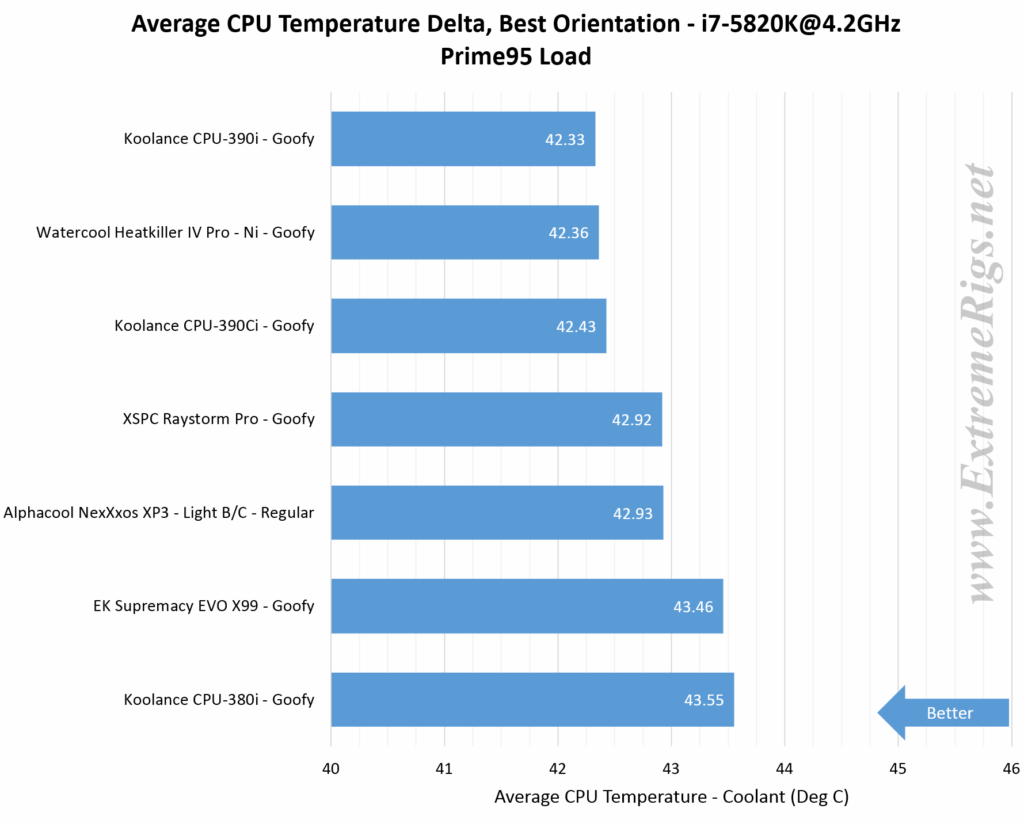
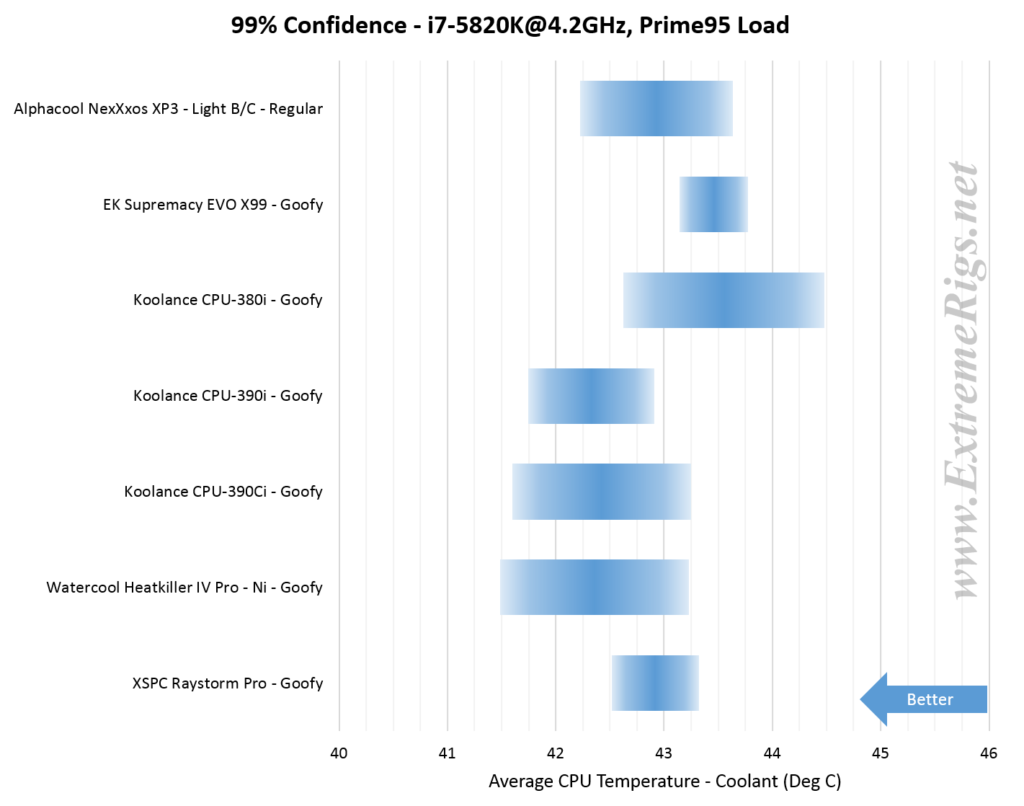



#1. I use water blocks without jet plate…
You should tests without jetplate. ¿Makes pump last longer? Do I sacrifice 10°C ?
For non critical applications I think is better… I’m I wrong?
#2. Koolance is getting cheaper by the minute….
CPU-390AMD has removed support for G34 socket “server” like my Tyan S8232,
Is just 1 centimeter of metal.. 2 small coins. How cheap is that?
#3. CPU-390intel does not have 2011-v3 Narrow ILM, I want to buy a new server, but I’m stuck with Supermicro SNK-P0050AP4.
¿How cheap is not having an optional Narrow ILM?
Square ILM is 80x80mm
Narrow ILM 56x94mm (similar to AMD, but not compatible WTF?) Intel finally realized AMD mount is not that bad, if want to make board small.
But intel decided not to make a compatible mount? ¿Why there is not an Universal Mount?
Why does a few milimeters hurt so much to a billion dollar company?
Cheap bastards. LOL. Jajajajajajaja
…
Koolance should not include thermal paste, if want to save costs, instead of cutting features, nobody use it anyway…
How good is it anyway? I use Antec formula 7 or 6, I’m happy. Won’t change for another brand.
not electric conductive…
Diamonds dust is cheap.
very thermal conductive.
Does not dry and crack like OCZ freeze…
Is not as hard as “the other diamond thermal paste brand.” = Does not need as much pressure.
Can be reused.
Is like diamond glue… if board is horizontal, heatsink does not need screws. Feels like a magnet.
Another thing I don’t like about the 390 are the arrows, the 380 arrows are smarter, less confusing…
390 is crazy.
I currently have a CPU 380i, with only 1C improvement in temps on this benchmark, I’m not about to dump $80 on the 390i. Very nice review though, very thorough.
It’s worth noting that no other reviewer or manufacturer had a CPU-380 as good as mine – other’s (e.g. thermalbench) have shown a bigger increase between the two. So if my 380 was just a lucky golden sample and yours wasn’t then you may see more of a difference. However all I can do is test what I have as best I can 🙂
Comments are closed.